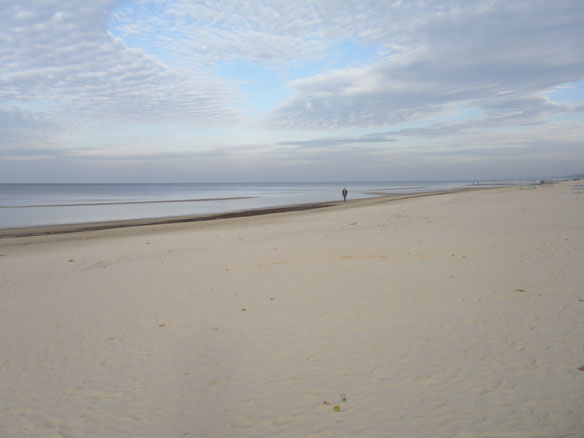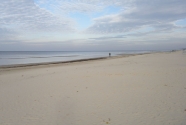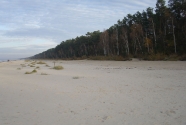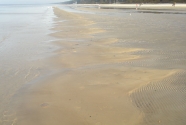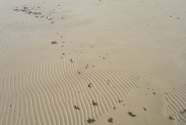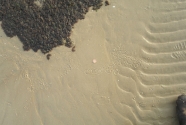
By Andrew Cooper, University of Ulster
Situated on the Baltic Sea coast of Latvia, Jurmala Beach runs unbroken for over 30km along the Gulf of Riga. It forms a coastal barrier behind which the Lielupe River flows into the sea. The beach is about 100m wide, with about 50m being dry sand and 50m intertidal wet sand. There are well developed offshore bars along the whole length of the beach.
On the dry beach, small clumps of dune grass form embryo dunes, but the beach is backed by a distinctive 10m-high sand dune covered with a forest of small trees. This gives way landward to a flat coastal plain that is also forested. The beach is frozen and snow-covered in winter but in summer is a popular bathing area.
In addition to its beautiful sand beaches Jurmala has natural springs and mud from the adjacent river apparently has beneficial properties. The area was thus recognised as a popular spa resort since at least the 18th Century. It is easily reached from Riga by train. In addition to Latvian visitors, it is the closest beach for a large part of southwest Russia and Belarus. Russian soldiers recuperated there during the Napoleonic Wars and Tsars and Kings holidayed there as did Soviet Dictators.
The spectacular beach is well known for its powdery golden sands and a variety of curious ripples and bars are formed by the Baltic waves.
—Andrew Cooper
Since Latvia regained its independence in 1991 and joined the European Union, the resort has continued to be popular with Latvians and foreign visitors.
The spectacular beach is well known for its powdery golden sands and a variety of curious ripples and bars are formed by the Baltic waves. In addition, there are abundant trails of many creatures that live in the beach. Part of the beach has a Blue Flag award, identifying clean water and beach facilities and it is crowded with holidaymakers in the summer. Even in winter, however, dozens of beach walkers can be seen with thick coast and hats.
There are many hotels and dachas (holiday houses) of various styles and ages. Houses range from wooden shacks to small palaces, while several hotels originated and continue to exist as spas. Fortunately most of this development has taken place behind the coastal dune, so that the beach has not been blighted with sea defences. The dune forest extends right to the beach creating a wonderful natural vista along much of the beach.
Seawalls have been built in front of the few hotels that are built on the dune, but most of the beach infrastructure (pathways, shops, restaurants) is assembled in the summer and dismantled in the winter which avoids the need for defences.
It is to be hoped that as the resort continues to develop, these sustainable approaches to managing a beach resort will be continued and the temptation and pressure for development on the frontal dune can be resisted.

